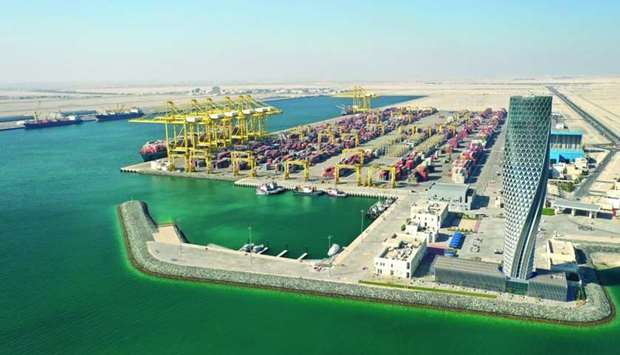The Hamad Port will see the arrival of a dozen mobile gantry cranes from China later this month, as part of efforts to operationalise the container terminal 2 (CT2) by the fourth quarter (Q4) of 2020.
The 12 RTGs (rubber-tyred gantry) cranes, which are used in intermodal operations to ground or stack containers, have been loaded from Haixi Heavy-duty Machinery Company (HHMC) facilities in Qingdao and are currently on the voyage.
HHMC is a large state-owned entity belonging to the China Shipbuilding Industry Corporation, dedicating in designing and manufacturing hoisting and port cargo handling machineries.
"The RTGs are destined for the new CT2 development at Hamad Port and are expected to arrive on August 22," according to a tweet of Mwani Qatar, the terminal operating company jointly established by Mwani Qatar (51%) and Milaha (49%).
The 403,500sqm CT2 at the Hamad Port is slated to be operationalised by the end of fourth quarter (Q4) of this year. The works on CT2 had begun in December last year as part of Qatar's expansion strategy in its maritime sector.
The CT2, with berth length of 1,200m and a 17m draft alongside, will have annual capacity of 2mn TEUs (twenty-foot equivalent units).
The CT2 development at Hamad Port is located immediately to the north of the existing Container Terminal – 1. QTerminals provides container, general cargo, RORO, livestock and offshore supply services in Phase 1 of the Hamad Port.
The Phase I of the Hamad Port consists of CT1, the general cargo terminal, the multi-user terminal, which handles RORO for vehicles, machinery, and live animals, and the offshore supply services terminal.
Considering the sustained growth outlook of Qatar, both CT2 and CT1 are expected to give a big push to the domestic economy in the medium to long term, industry insiders said, highlighting that the port’s throughput is estimated to be roughly 1.5 times gross domestic product, or GDP.
Modelled as a transshipment hub, the Hamad Port has already transshipped containers to other locations as Iraq, Kuwait, and the sub-continent.
The port has significant scope for growth and innovation and QTerminals, as the operator of Phase 1 and the developer of Phase 2, has potential to establish and maintain stronger maritime trade to stimulate economic growth locally, regionally, and internationally.
The Hamad Port, Qatar’s gateway to world trade, handles general cargo, livestock, automobiles, and bulk grain. Its strategic geographical location offers opportunities to create cargo movement towards the upper Gulf, supporting countries such as Kuwait and Iraq, and south towards Oman, according to Neville Bissett, QTerminals chief executive.
Qatar's maritime sector continued to be busy, amidst the Covid-19, as more vessels called on the Hamad Port.
According to the Planning and Statistics Authority's latest monthly statement, the port had seen 124 vessels berthed and net tonnage was 2.61mn tonnes in June 2020.
The net tonnage had seen a 3.4% month-on-month increase but fell 2.9% on a yearly basis in June this year.


